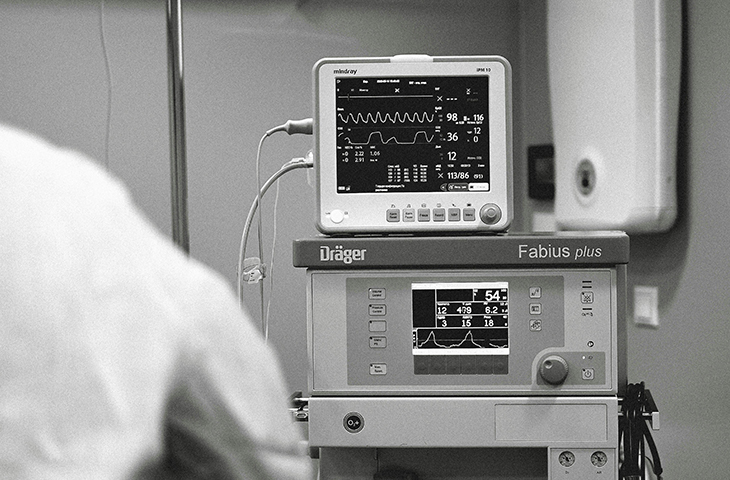Medicaid Cuts Most Likely To Impact These 5 Groups

cuts could have a significant impact on low-income households, older adults, children, and other vulnerable groups. Maskot/Getty Images
- Republican leaders are looking at budget proposals that could drastically reduce Medicaid funding.
- Experts say the cuts could have a significant impact on low-income households that rely on the federally funded program.
- Medicaid cuts could also affect reproductive health services as well as programs for older adults, children, and people with mental health disorders.
Republicans continue to debate how deep cuts should be in the nation’s Medicaid health insurance program.
The reductions are part of GOP plans to slash $5 trillion in federal expenditures over the next 10 years.
Under those proposals, Medicaid spending would be reduced by more than $2 trillion over the next decade. Medicaid’s current annual budget is about $600 billion.
Medicaid is a federal government program that provides health insurance to more than 80 million people in the United States, including low-income households, seniors in nursing homes, adults with disabilities, and adults with mental health disorders.
Each state administers its own Medicaid program using funds provided by the federal government and state revenues. The money is mostly used to reimburse hospitals, community health centers, physicians, nursing homes, and other medical facilities.
Republican leaders and White House officials are considering a “per capita gap,” which would cap federal payments to states that had expanded Medicaid programs under the Affordable Care Act (ACA) and perpetuate existing inequities.
GOP leaders are also weighing whether to reduce federal matching funds to states and whether to place work requirements on some Medicaid recipients.
In addition, they are looking at reducing the expansion in Medicaid coverage that some states adopted as part of the ACA. About 20 million people are currently covered through this expansion.
Experts say the Medicaid reductions being discussed would have serious health-related impacts on a wide range of people.
“Medicaid is more than just a safety net. It is a lifeline that supports the well-being of children, older adults, people with disabilities, and low-income families across the country,” said officials at the National Medical Association, an organization that represents Black healthcare officials, in a statement provided to Healthline.
“Additionally, it helps ensure access to healthcare services, prevents financial hardship due to medical costs, and supports the overall health and well-being of vulnerable populations.”
Kathleen Adams, PhD, a professor of health policy and management at Emory University’s Rollins School of Public Health in Atlanta, noted that while Medicaid programs vary across states, “basic healthcare services, including outpatient prescription drugs, are covered by states’ Medicaid programs.”
“Long-term care for our elderly and disabled is largely paid for through Medicaid. Its funding is critical to our ‘safety-net,’ rural hospitals, and nursing homes,” she told Healthline.
Pregnant people
The Guttmacher Institute, a research and policy organization committed to advancing sexual and reproductive health and rights worldwide, shared with Healthline that about 21% of U.S. women of reproductive age are insured through Medicaid.
Institute officials also note that 4 in 10 births in the United States are covered by Medicaid. They also add that it is a major source of coverage for people seeking contraceptive services.
“Medicaid plays a vital role in ensuring affordable access to sexual and reproductive healthcare,” said Amy Friedrich-Karnik, the director of federal policy at the Guttmacher Institute, in a statement provided to Healthline.
“Further, Medicaid’s coverage of a robust package of family planning services, including a wide range of birth control methods with no out-of-pocket costs, is integral to ensuring person-centered care and upholding enrollee’s right to decide whether and when to become pregnant,” she added.
Experts also caution that Medicaid cuts could endanger the health of children.
“Medicaid provides funding for prenatal and postnatal care, particularly for low-income women. These populations already face barriers to care and reducing Medicare will lead to an increased risk for infant and maternal mortality,” Kanwar Kelley, MD, a specialist in otolaryngology head and neck surgery, obesity medicine, and lifestyle medicine and the co-founder and chief executive officer of Side Health, told Healthline.
“We could see a worsening of our maternal health crises and in turn, gestational age, and birthweight of our infants,” added Adams.
“We would likely see increased rates of severe maternal morbidities, which include outcomes such as hemorrhage, sepsis, renal failure, shock, acute respiratory distress, eclampsia, heart failure, and, in severe cases, death. These are costly but preventable outcomes. The racial gap that exists in these outcomes would likely worsen,” Adams said.
Older adults
Although many people 65 years and older are covered by Medicare, a number of services provided to older adults are reimbursed by Medicaid.
It’s estimated that 5 out of 8 older adults in nursing home facilities are insured through Medicaid. In addition, Medicaid provides health coverage to about 12 million low-income seniors who are also enrolled in Medicare.
Medicaid also helps fund the Program of All-Inclusive Care for the Elderly (PACE), an initiative that helps people 55 years and older continue to live in their homes.
Justice in Aging, a non-profit organization that helps older adults living in poverty, states that Medicaid is a “lifeline for older adults.” In particular, it provides assistance for seniors who need help with daily activities such as eating, bathing, and dressing.
“Under these proposals, older adults and people with disabilities would lose services, be saddled with unaffordable financial obligations, and receive a lower quality of care,” the organization noted.
“Elderly care and end-of-life care would also suffer,” added Kelley. “Medicare represents a large portion of funding for an aging population. With the concurrent cuts to primary care, the population that requires long-term care may increase and need more medical services.”
People with mental health disorders
Medicaid is the single largest payer of mental health services in the United States. It also has a significant role in reimbursement for substance use disorder services.
A survey by the Kaiser Family Foundation reported that nearly 40% of nonelderly adults covered by Medicaid in 2020 had mental health issues or substance use disorder. The foundation also noted that Medicaid plays an important role in providing mental health services to children.
People with mental health and substance use issues also tend to require more general healthcare services than other segments of the population. Medicaid estimated that 12 million visits to the nation’s emergency rooms in 2007 involved a person with mental health issues, substance use issues, or both.
“[Mental health and substance disorder] programs already rely heavily on Medicare funding. Cutting would worsen these services, which are already suffering from shortages,” said Kelley.
Low-income households
Experts say Medicaid cuts could have a devastating impact on households that are at or below the poverty level.
They add that these lower-income households could include people who live in rural areas and those who are covered by Medicaid under the Affordable Care Act expansion.
“[The cuts] would ultimately lead to reduced access to care for many individuals. People would be ineligible for coverage, and facilities would have to close due to a lack of money,” said Kelley. “Those in rural areas may have to travel farther to clinics and hospitals. There may also be increased wait times due to a lack of staff and facilities.”
“The ACA expanded Medicaid eligibility and rollbacks would result in the loss of insurance for thousands of Americans,” he added. “Lack of insurance will lead to delays in medical care, increased morbidity, increased mortality, and increased medical debt for American citizens.”
Adams agreed.
“The first-round effects would be reductions in numbers of lower-income households with insurance access to needed services, reduced access to preventive and primary care as well as services needed to manage chronic conditions (e.g. diabetes, heart disease) which are higher among these vulnerable populations,” Adams said.
“The second-round effects will include increased uncompensated care costs at our hospitals and potentially, increased closures, especially in rural areas.”
Impacts on the community at large
Experts say that people who aren’t covered by Medicaid could eventually feel the effects of these budget cuts.
The impacts could include higher insurance premiums, longer waits at medical facilities, and an increase in illness in communities.
“The increase in the number of uninsured individuals strains the medical system,” Kelley said.
“Many will use the emergency room instead of seeing their primary doctor or specialist for preventive care. Hospitals would likely face the brunt of uncompensated care and increase costs or decrease services to offset these losses. Insurance premiums would rise for those with insurance due to fewer people participating in the system.”
“There would certainly be ‘spillover’ effects to the general population,” Adams added. “Providers of ‘last resort’ such as emergency rooms would quite likely be more crowded.”
“To the extent the cuts reverse progress on the overall health of our population — especially, our workforce — we could all see some impacts in terms of absenteeism, spread of contagious disease and reduced productivity,” she said.


